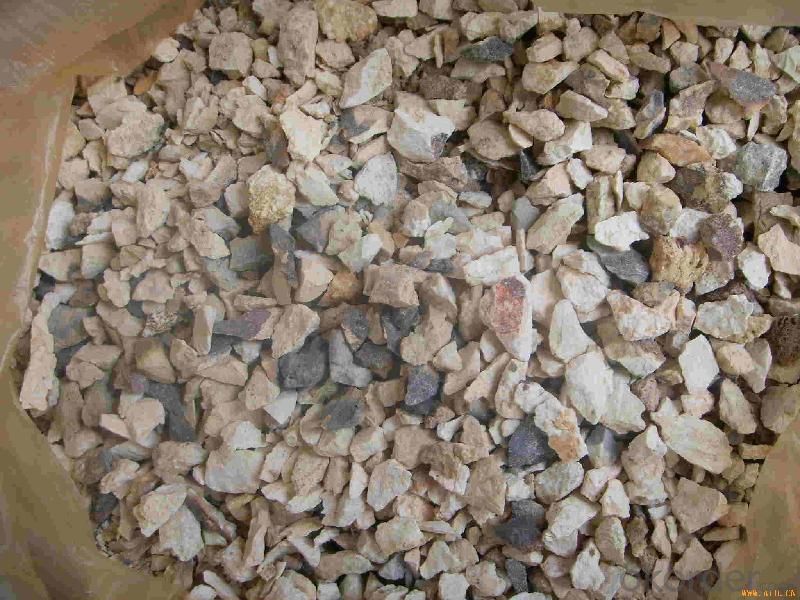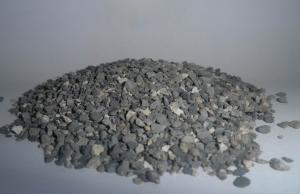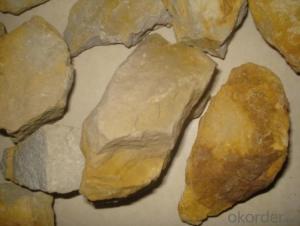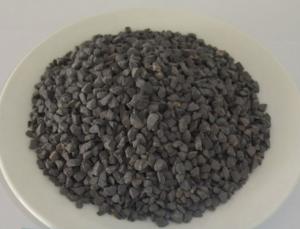Raw Materials for Refractory:Calcined Bauxite for Refractory Bricks
- Loading Port:
- China main port
- Payment Terms:
- TT OR LC
- Min Order Qty:
- 25 m.t.
- Supply Capability:
- 10000 m.t./month
OKorder Service Pledge
OKorder Financial Service
You Might Also Like
Quick Details
| Place of Origin: | Shanghai, China (Mainland) | Shape: | Brick | Material: | Alumina Block |
| SiO2 Content (%): | 3~9% | Al2O3 Content (%): | 3~25% | MgO Content (%): | 40~60% |
| CaO Content (%): | 2% | Refractoriness (Degree): | 1770°< Refractoriness< 2000° | CrO Content (%): | 8~20% |
| SiC Content (%): | none | Model Number: | KS1323 | Brand Name: | cnbm |
Packaging & Delivery
| Packaging Details: | carton |
| Delivery Detail: | 3~5days |
Specifications
calcined bauxite for refractory bricks
Refractory Bricks magnesia chrome bricks are mainly made from sintered
calcined bauxite for refractory bricks
Specifications
Refractory Bricks magnesia chrome bricks are mainly made from sintered magnesia and chrome-oxide after high pressure shaped
Refractory Bricks magnesia chrome bricks are mainly made from sintered magnesia and chrome-oxide, by high pressure shaping and high temperature firing. According to different requirements, the contents of the Cr2O3 can be changed.
item\index | MGe-8 | MGe-12 | MGe-16 | MGe-20 |
MgO,% ≥ | 60 | 55 | 45 | 40 |
Cr2O3,% ≥ | 8 | 12 | 16 | 20 |
Apparent porosity % ≤ | 21 | 21 | 23 | 23 |
Cold crushing strength,MPa ≥ | 30 | 30 | 30 | 30 |
0.2MPa the load softens the beginning temperatur/°C ≥ | 1530 | 1550 | 1550 | 1550 |
Heat shock resistance(950°C air cooling),each ≥ | Provide the data | |||

- Q: Can anyone tell me what is A-leve fireproof material?
- Combustion performance of materials can be divided into: A-level, B1-level, B2-level and B3-level, which respectively refer to noncombustible, difficult-flammble, flammable and inflammable materials. Building materials can be divided into four grades based on combustion performance (noninflammability, flame retardancy, flammability and inflammability). According to the stipulation of "Specification of Fireproof Design for Buildings" (GBJ16-1987) (2001 revised edition), fire hazard of production or storage should be divided into A-level, B-level, C-level, D-level and E-level. In "Specifications on Fireproof Design for Petrochemical Enterprises" (GB50160--1992) (1999 Revision), it also stipulates that fire hazard should be classified on the same basis of subtsance danger in usage, production or storage. According to different fire hazard, requirements and measures of oreventing and restricting fire explosion can be put forward from the aspects of fire?separation distance, fire resistant rating of buildings, allowed floors, safe evacuation, fire fighting facilities and other aspects.
- Q: What is unshaped refractory?
- Concrete。 Early concrete technology appears, it is not forming products in the heat furnace, some parts such as pit heating furnace furnace wall, rotary kiln mouth ring, cutting slope and discharge chamber wall, etc., are able to design large masonry (top heating block weighing 3-4 tons) made concrete. Concrete cattle production method is to pour the material into the model, vibration molding, after the release of heat treatment, to provide users in addition to large blocks, weight, in use, and machine pressure brick no essential difference. The amount of water used in the casting material produced by the manufacturer is less than 10% above that in the field, and the processing quality is good and the quality is stable. As the bricks are large and heavy, the site shall have lifting equipment. As long as the site can be hoisted, the concrete shall be used as far as possible, or smaller ones, and some people can lift it. Concrete does not require the user to do a special heat treatment, this point is very meaningful.
- Q: what's the varieties of fire-proof?sealing?material?
- Fire blocking material currently on the market include: fire stopping board, foam blocking material, flame resisting module, fire-resisting sealant, flexible organic caulking, WXY-II and fire retardant bag, etc. fire-proof?sealing?material is widely used in building construction and can ensure high-temperature flame and smoke from fires not spread to another fire?compartment, different buildings generally use different sealing methods. Pipeline is generaly sealed by pouring concrete board or mortar.
- Q: What are the features of construction class A fire resistant door ?
- Residential building: If the building height exceeds 100 meters, the combustion performance of thermal insulation material should be A level. Other civil building: Class A fireproofing material MCM should be set in buildings whose height is above 50 meters. National A level fireproof flexible?material is made up of soil, rock flour, sand, cement and other inorganic powder and modifying agent. Product density is 2327kg / m3. Upon examination, the combustion performance of the product meets A level requirements, and the additional classification meets s2, d0, t0 requirements. According to GB 8624-2006 sepcification, combustion performance of the product should reach A2-s2, d0, t0 level. Light, thin: 2-4mm thick / piece, saving space and cement, convenient to transport. : State Class A fireproof flexible?material. Freezing-thaw resistance: up to 100 freezing-thaw experiments (close to 100 years), the surface has no powder, no crack and no peeling. Aging and acid resistance: anti-aging property can reach more than 3500h, that is, it will not degenerate for 50 years. Recyclable: new energy, renewable , no "three wastes" emission
- Q: What is the most reasonable drying heating curve of magnesia refractories? Products of less than 0.5T
- o
- Q: Who knows about ranking rules of fireproofing thermal insulation materials for exterior wall?
- (1) the height of buildings is greater than or equal to 24 m, the combustion performance of thermal insulation material should be A-level. (2) the height of buildings is less than 24 m, the combustion performance of thermal insulation materials should be A- or B1-level. When using B1-level thermal insulation materials, fire barrier zone should be set in each floor. (3) incombustible materials should be used as the protective layer of thermal insulation materials. Thermal insulation materials should be completely covered by protective coatings. The thickness of protective layer should be no less than 3 mm. (4) The base walls should be set in buildings with nontransparent curtain wall structures of metal, stone,etc. The fire endurance of which should comply with relevant provisions of current fire?safety?rules on fire endurance of external wall. The fire endurance and fire protection construction of pier?between?two?windows, window sill walls, skirt walls of glass?curtain?walls should comply with relevant provisions of current fire?safety?rules on building curtain walls. (5) the internal cavity of base walls, as well as the space between the skirt wall and base walls, pier?between?two?windows, window sill walls should be sealed with fire-proof sealing materials at each floor.
- Q: Which one is the best refractory material?
- o make it simple, you can kindle it, and observe the burning time. If there is a professional need to be accurate, then you can send it to the professional testing company. As far as I know, the Kebiao Company over the victory bridge, Qingdao can offer professional test. I hope my answer can help you, thank you, hope to be adopted.
- Q: What are the types of advanced refractory?
- Hello there: Divided into two categories of general and special refractories ordinary refractories by chemical properties into acidic, neutral and alkaline. Special refractory composition is divided by high temperature oxide, refractory compounds and high-temperature composite materials Furthermore, according to refractoriness can be divided into ordinary refractory products (1580 ~ 1770 ℃), advanced refractory products (1770 ~ 2000 ℃) and grade refractory products (2000 ℃ above). the article can be divided into blocks (standard bricks, shaped bricks, etc. ), special shape (crucible, sagger, pipe, etc.), fibrous (aluminosilicate, zirconia and boron carbide quality, etc.) and a random shape (refractory clay, pouring materials and ramming mixes, etc.) according to the sintering process it can be divided into sintered products, cast products, melt blown products.
- Q: What are the characteristics of clay refractory materials?
- Refractory clay refers to the refractory clay and bauxite, whose refractoriness is over 1580℃, which can be used as refractory materials. Apart from high refractoriness, they can maintain stability of volume under high temperature conditions and has resistance to slag, the sudden cold and hot, and mechanical strength, so after calcination, it can be abnormal firm.
- Q: What is refractory cement?
- The introduction of properties and chemical composition of refractory cement. Refractory cement usually refers to the cement with calcium?aluminate as the mian compopnent. Refractory cement is a monolithic refractory. It is in particular a basic binder of castable refractory. Its chemical composition is mainly Al2O3 and CaO, and some contain a considerable number of Fe2O3 and SiO2.
Send your message to us
Raw Materials for Refractory:Calcined Bauxite for Refractory Bricks
- Loading Port:
- China main port
- Payment Terms:
- TT OR LC
- Min Order Qty:
- 25 m.t.
- Supply Capability:
- 10000 m.t./month
OKorder Service Pledge
OKorder Financial Service
Similar products
Hot products
Hot Searches
Related keywords
























